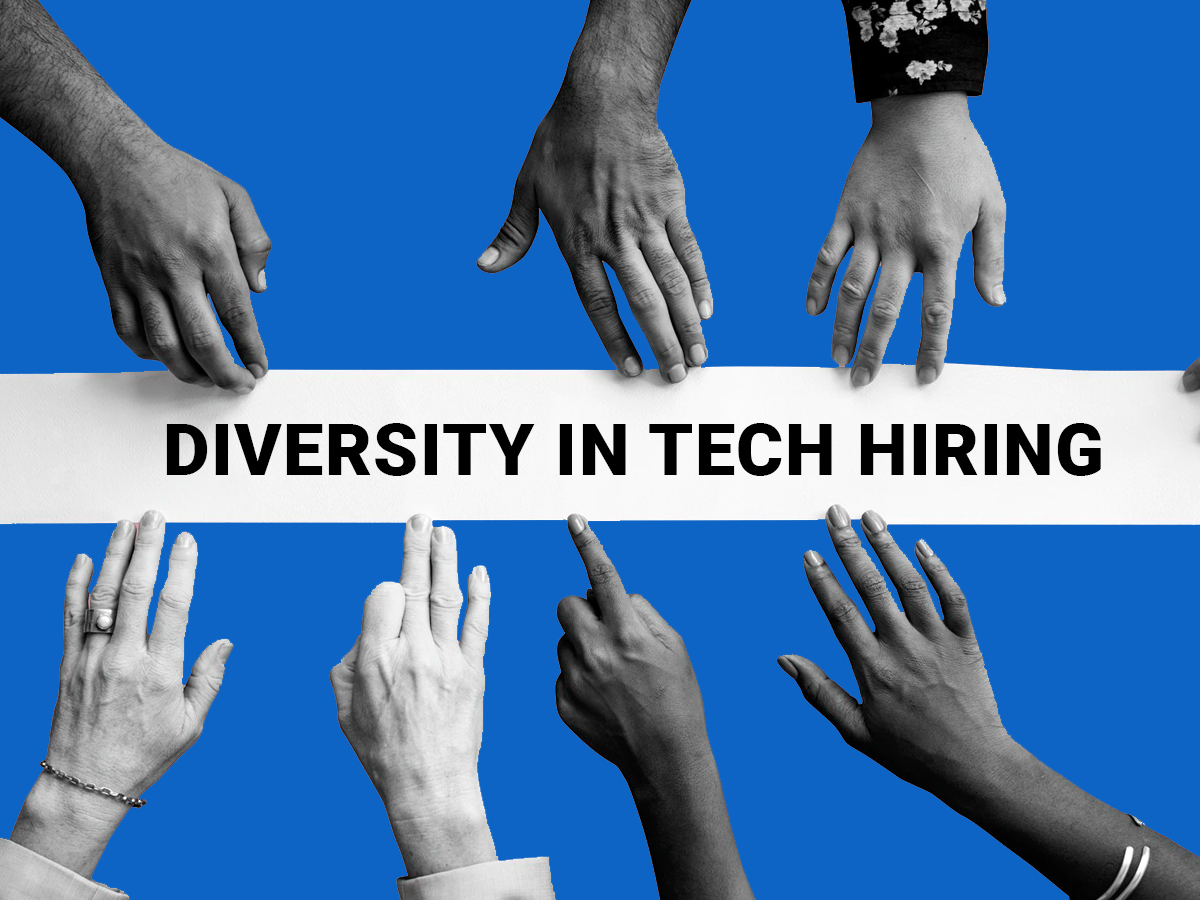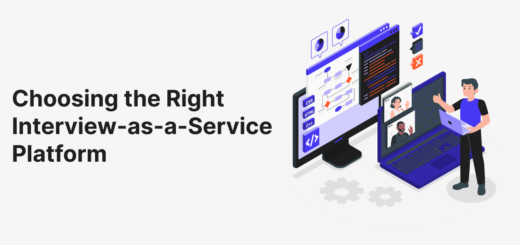A Guide to Diversity and Inclusion in the Technical Hiring Process

Introduction
The technical hiring process is often seen as a biased process. Even when you’ve nailed your resume, cover letter, and portfolio, it can feel like the odds are stacked against you when you don’t have a referral or “inside track”. Unfortunately, some of these barriers can be even greater for people from diverse backgrounds. According to reports, women constituted only 29% of the workforce in technology companies in 2021, while ethnic minorities constituted only 22%. The field of technology has lagged behind in efforts to make the field more diverse and inclusive. But this doesn’t have to be the case anymore. In this article, we’ll explore the realities of diversity and inclusion in technical hiring today, as well as provide guidance for how recruiters and employers can make their process more equitable for everyone involved.
Defining Diversity and Inclusion
When we talk about diversity and inclusion in the technical hiring process, we are referring to a set of policies and practices that aim to increase the representation of underrepresented groups in the tech workforce. This includes but is not limited to people of color, women, people with disabilities, and veterans.
There are a number of ways to increase diversity and inclusion in the tech recruitment process. One way is to expand your recruiting pipeline to target underrepresented groups. This can be done through targeted outreach efforts, such as working with Student Affairs offices at HBCUs or partnering with organizations that support women in tech.
Another way to increase diversity and inclusion is to create an inclusive environment throughout the hiring process, from the job ad all the way through to onboarding. This means being intentional about the language used in job ads, using blind screening methods during initial resume review, and ensuring that all interviewers receive training on how to conduct fair and unbiased interviews.
By taking steps to increase diversity and inclusion in the technical hiring process, tech hiring managers can not only make their workplaces more equitable but also tap into a larger pool of talent. A more diverse workforce leads to better decision-making, improved innovation, and increased profitability. It’s a win-win for everyone involved.
Why Are Diversity and Inclusion Important in Technical Hiring?
Organizations that value diversity and inclusion are better able to attract and retain top talent, as well as foster a more positive and productive work environment. A diverse workforce brings with it a variety of perspectives and ideas, which can lead to new and innovative solutions to challenges. Additionally, a workplace that is inclusive of all employees ensures that everyone feels valued and respected, resulting in higher job satisfaction and engagement.
When it comes to technical hiring, diversity, and inclusion are especially important. The tech industry has long been dominated by certain communities, but this is slowly changing. As the industry becomes more competitive, organizations are recognizing the need to tap into a wider pool of talent in order to stay ahead of the curve. By proactively seeking out candidates from underrepresented groups, companies can not only improve their chances of finding the best possible candidate for the job but also help to promote diversity within the industry as a whole.
There are numerous benefits to diversity and inclusion in technical hiring. Not only does it give organizations access to a larger pool of potential candidates, but it also helps create a more positive work environment where everyone feels valued and respected. Additionally, it can lead to new and innovative solutions to challenges faced by the company. Diversity and inclusion should therefore be given due consideration in any technical hiring process.
The Technical Hiring Process
In order to create a more diverse and inclusive technical workforce, it’s important to understand the technical hiring process. This process usually begins with a job posting, which is followed by screening and interviewing candidates.
The first step in the technical hiring process is to post the job opening. This can be done on online job boards or company websites. Once the job posting is up, candidates will begin applying for the position. To make a job description more inclusive, you can do the following:
- Remove gender-coded words from the job posting.
- Eliminate anything from the job description that can highlight racial bias.
- Mention positive phrases like ‘all-inclusive workplace.’
Next, the employer will screen candidates based on their qualifications. This usually includes reviewing resumes and conducting phone interviews. The goal of this stage is to identify a pool of qualified candidates to move on to the next stage of the process. To make sure that the screening process is bias-free and inclusive, you can do the following:
- Avoid using gendered wording to sound fair and inclusive.
- Communicate in a way that promotes cultural, religious, and ethnic diversity.
- Try to curb unconscious bias so that the screening process is inclusive.
- Establish a structured screening process for all candidates.
After screening, employers will typically invite a group of qualified candidates to participate in an interview. This can be done in person or via video conference. During the interview, employers will ask questions about the candidate’s experience and skill set. The goal of this stage is to get to know the candidate better and see if they’re a good fit for the position. To include diversity and inclusivity in the hiring process, implement the following ways:
- Make sure all the candidates are treated equally during the interview process.
- Have a structured interview process for all candidates.
- Outsource the interview process to avoid hiring bias.
Employers often also choose interview-as-a-service to help with the overall technical interview process to manage the process better and provide a great interview experience to the candidates. Employers choose interview-as-a-service providers such as HireHunch to save their time and money in recruiting technical employees. HireHunch has enlisted a panel of interviewers who are industry experts spread across various tech functions and are experienced in their fields to interview the tech candidates thoroughly on behalf of businesses.
Once interviews are complete, employers will make a decision about who to hire for the position. The goal of this stage is to identify the candidate that best meets the needs of the organization. In some cases, employers may extend job offers to multiple candidates in order to create a more diverse workforce.
Best Practices for Achieving Diversity and Inclusion in Technical Hiring
There is no one-size-fits-all solution for achieving diversity and inclusion in technical hiring, but there are some best practices that organizations can follow to help them move in the right direction. Here are a few of those best practices:
1. Define what diversity and inclusion mean to your organization, and make sure everyone is on the same page.
2. Conduct an analysis of your current workforce to identify areas where you could improve your diversity and inclusion efforts.
3. Set specific goals for increasing diversity and inclusion in your technical hiring process and create a plan for how you will achieve those goals.
4. Be intentional about seeking out diverse candidates when recruiting for open positions. Use a variety of channels to reach potential candidates, including online job boards, professional networks, and community organizations.
5. Make sure your interview process is structured in a way that allows all candidates to fairly showcase their skills and qualifications. Avoid unconscious bias by using standardized questions and scoring rubrics.
6. Evaluate your progress regularly and make adjustments to your approach as needed.
Conclusion
Diversifying and creating an inclusive tech hiring process is essential for companies to thrive in the current business climate. By taking steps such as actively seeking out diverse candidates, giving everyone equal opportunity during their recruitment processes, and engaging with different communities, organizations can create positive change that will lead to better outcomes for everyone involved. With the right strategies in place, a company can create an environment where all individuals are respected and valued – no matter who they are or where they come from.



